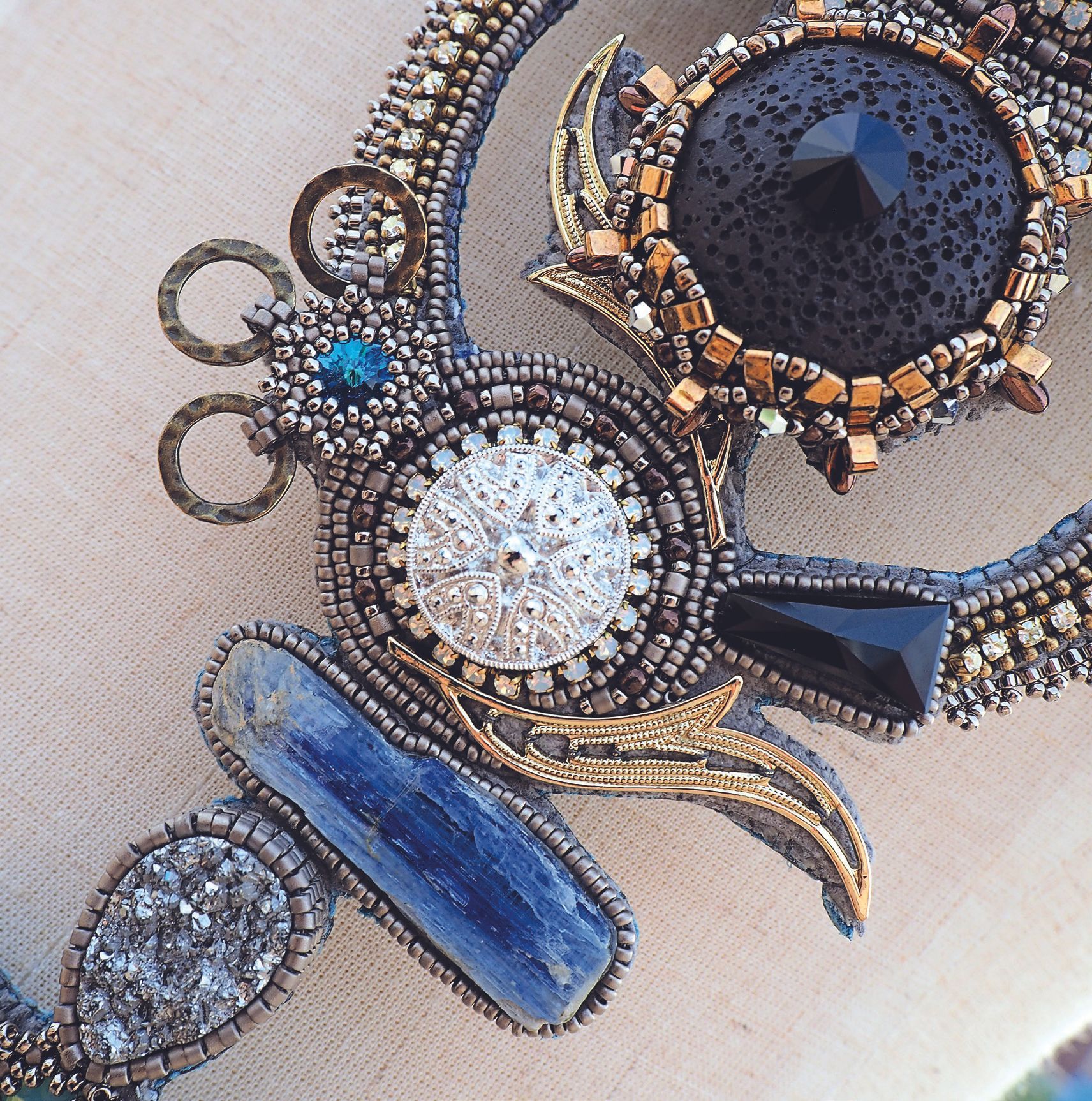Hi, Erika, tell us about your background: I was born in a little village in Slovakia, with a Hungarian cultural background. I grew up with my grandparents. My grandma taught me how to sew on the old manual sewing machine she inherited from my great-grandma. It was already around 100 years old at that time, and I still have it. We had a lot of animals: sheep, pigs, rabbits, and of course cats and dogs and we took care of them together. My grandpa, who was a survivor of a Nazi work camp had a deep impact on my life. He never compromised his beliefs, not even in the hardest times. He tried to help everyone around him and loved us all very much.
Tell us about your life now: As a teenager, I wanted to be a writer and later a world traveller. After living in Hungary, Romania and the Czech Republic I moved to Amsterdam. It was supposed to be a short-time adventure, however, I fell in love with biking along the canals, the crooked houses and the atmosphere of the city. After two years of renting we moved to our own home recently, so I suppose we will stay for a while.
Primarily I work as a beadwork designer, focusing on writing tutorials. However, I also have a side job: I work as a tour guide. I love travelling, and since designing jewellery and drawing diagrams all happen inside my home-studio, I was looking for a way to meet more often with like-minded people and wander around the city together. Every beader who visits Amsterdam is very welcome to join me on a city walk.
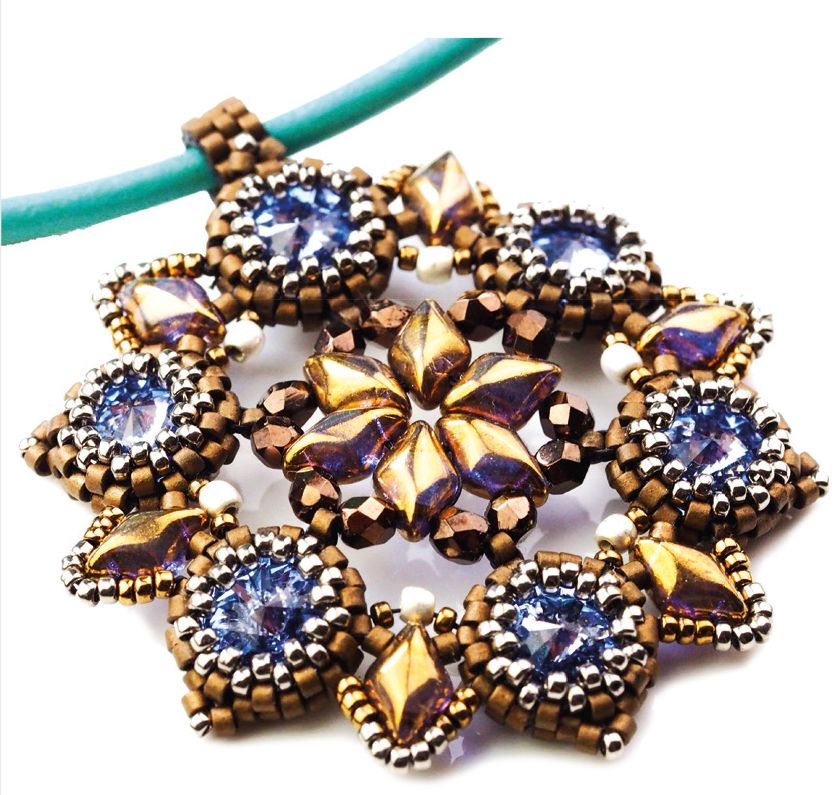
What materials/technique etc do you commonly use in your work? I have two favourites: bead weaving (especially peyote) and bead embroidery. I’m not a fan of crochet or bead knitting, however, I admire artists working with these techniques, but it’s not for me. Most of the time I focus on tutorial writing and teaching. I like to play with new beads, funky, surprising and stylish colour combinations. I like to experiment, and then draw the diagrams and write the instructions, so beaders can easily make the same piece they like it.
When my time allows, I like to participate in beading contests. The Battle of the Beadsmith pushed me to think bigger and really push my limits. My competition pieces are always made with bead embroidery. I find it the perfect way to express myself through jewellery, as it enables me to bead any shape I like.
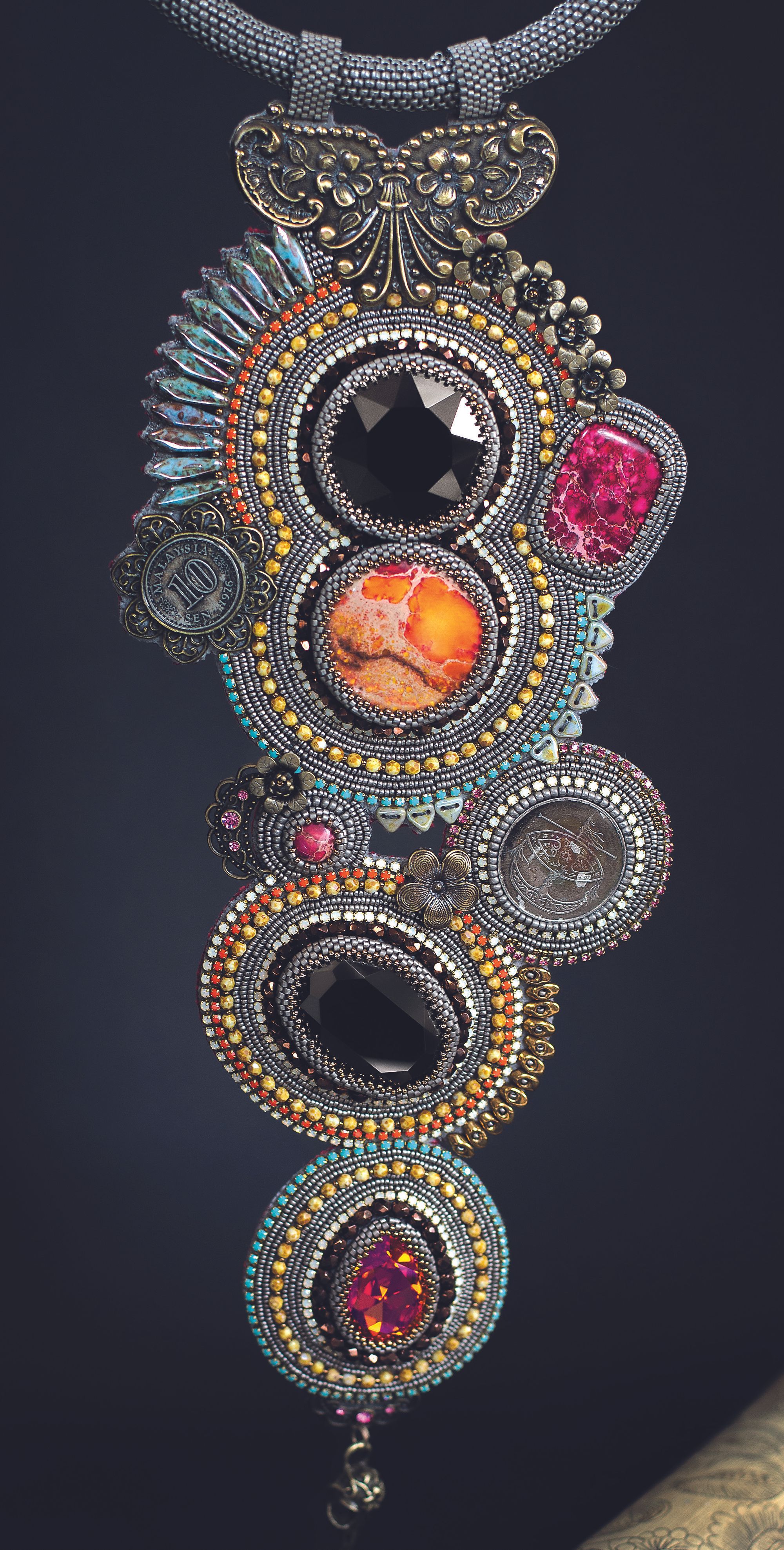
Have you formally studied any relevant courses or taken any bead making or jewellery classes? I studied philosophy of art, linguistics, and literature. I wanted to become a writer but then shifted towards jewellery making. It was a big thing for me since there was never an artist in our family. Everything I learned during university nfluenced my beadwork, and I get often inspired by artists we learned about in art history classes. There weren’t any proper bead shops in Slovakia when I began beading, so, unfortunately, I couldn’t follow classes. I learned only from books, beading tutorials and by experimenting. Even though I write instructions myself now, I still would love to participate in workshops. It’s my dream to meet Kinga Nichols, Melissa Grakowsky Shippee, Marcia DeCoster and Apollinariya Koprivnik.
What are the pieces that you are most proud of? I am proudest of the three pieces I made for the Battle of the Beadsmith competition. The vest ‘Serendib’ inspired by Sri Lanka, and the necklaces ‘Borneo’ and ‘Safekeeper’.
The third one I made after moving from Prague to Amsterdam. I had to make a lot of decisions about things I owned, and this process raised a question: what is more important – something expensive without a meaning or something that would not be valuable for others, but for me holds a special memory. I used semi-precious stones and Swarovski crystals, but also found objects and even a coffee spoon in the ‘Safekeeper’ necklace. I also played with negative space, since there is always something in our life which we can’t fill with material things.
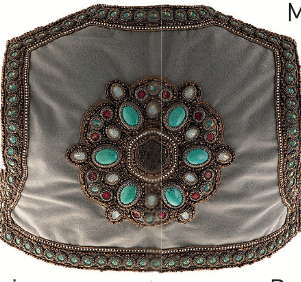
Do you make a lot of finished jewellery, and has anyone (we might have heard of) worn your jewellery? I focus on beading tutorials, but sometimes I also sell finished jewellery. I am rarely attached to pieces, the process of creating and taking pictures is enough for me. Several years ago I was exhibiting in Hamburg during the Beaders Best show. One of my earring designs with the Antoinette beaded bead caught the eye of Marcia DeCoster, and she owns a black- green pair now.
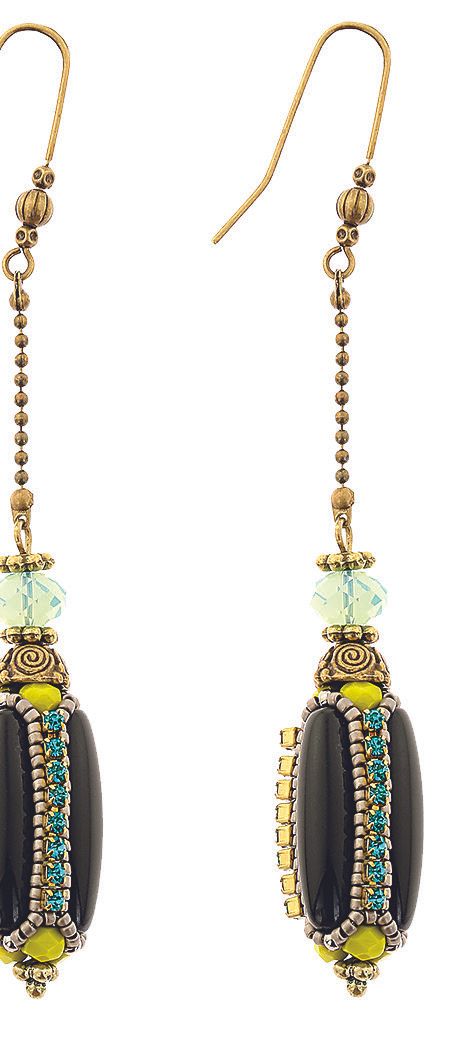
One of my favourite collections is The Traveller. It’s about the freedom on the road, wind in the hair and the beautiful places around us. I use coins as focal pieces and embellish them with rhinestone chain, fire polished beads, and Japanese seed beads.
Where do you take your inspiration from? I love to travel and I get inspired by the whole world around me! Distant cultures like India, Cambodia or Burma have a deep impact both on my worldview and on my jewellery. I often bring home coins, stones, little artefacts from the countries I visit and like to use them in my jewellery. This way instead of sitting in a box I can wear them every day. Ornaments I see on buildings, paintings, and statues, but also flowers inspire me to play with different shapes, colours, and styles. For this issue of the Bead Magazine, I made a bracelet inspired by the Dutch Golden Age and a painting of Clara Peeters, the first significant female painter of the era. However, I also get in- spired by an atmosphere or a mood. Two of my favourite pieces are parts of the ‘Looks like happy...’ collection. They are seemingly colourful and carefree, however, they talk about the hidden depths of depression, which can poison our lives and eat out the happiness from it in secret. I went through a pretty serious case of depression myself, and I think it’s very important to talk about it openly.
Do you teach your craft at all? I started to bead 10 years ago and started to teach only one year after that. After finishing university I co-founded the first bead shop in Slovakia – partly to solve my problem of not having enough beads on hand. People were very interested, but they didn’t know how to use the new bead shapes and didn’t understand why the expensive Japanese seed beads are better than cheap Chinese seed beads. We had to teach them so they could appreciate and use what we offered. At first, I taught together with my partner Zsuzsanna Szilagyi. After two years I bought her share of the business. I was still designing but didn’t have energy or the time to teach, so my tutorials were published in a Slovak creative newspaper to make them more available. Two years ago I decided to dedicate myself to teaching beadwork. The shop has new owners now, and I am designing and writing again!
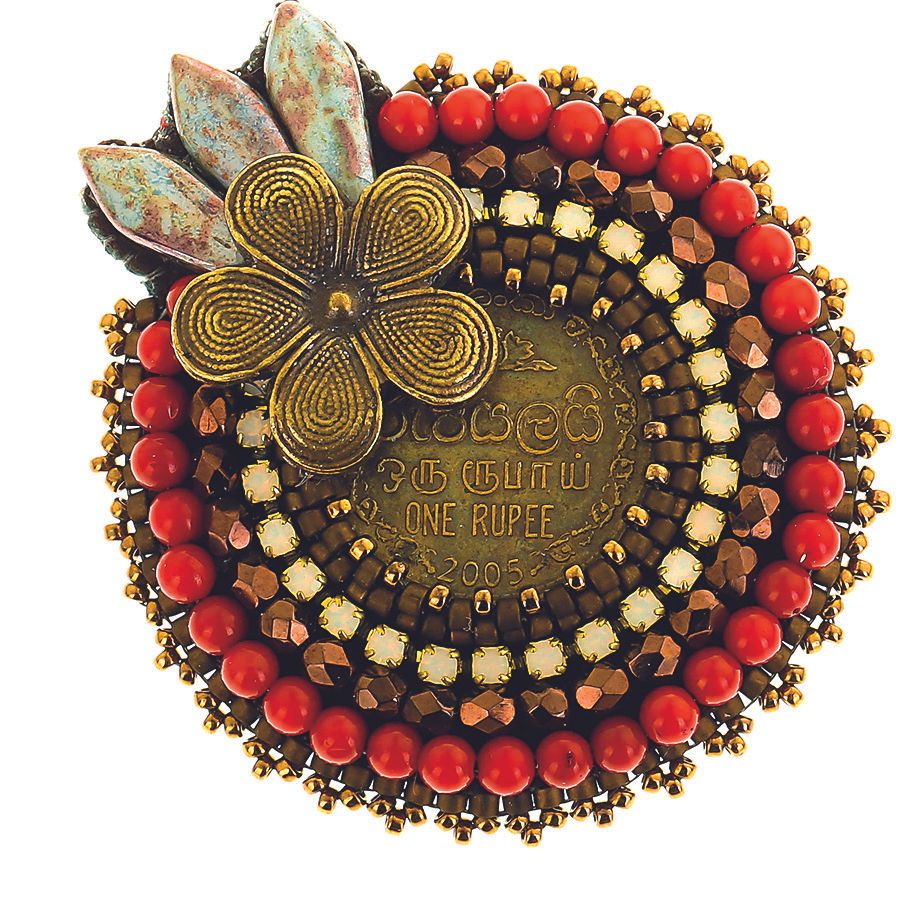
Have you had any of your work published? I’ve had several tutorials published in bead magazines. I haven’t been able to write a book as of yet, but that’s actually my big plan for the next year. Hopefully, I will already have the first few designs ready by the time you read this article.
Describe your workspace? Part of the living room is dedicated to my beads. Beading is my main job, and both myself and my husband treat it that way. So the first thing bought to our new flat was a table with shelves for beads, components, and tools, so everything is on hand when I need them. It is my office and studio in one.
I used to struggle with photography and worked hard on improving the quality of my pictures. Part of it was installing a mini-studio at home, so I can take a profes- sional quality photos anytime. Photography became my passion, and I am sharing what I learned on my blog in the series ‘How to take better pictures about jewellery’.
One of the best things in writing instructions for me is to learn how to use a bunch of different programs, and even coding a bit. I use Adobe Photoshop and Illustrator for post-processing and drawing diagrams, and built my website in WordPress on a self-hosted domain.
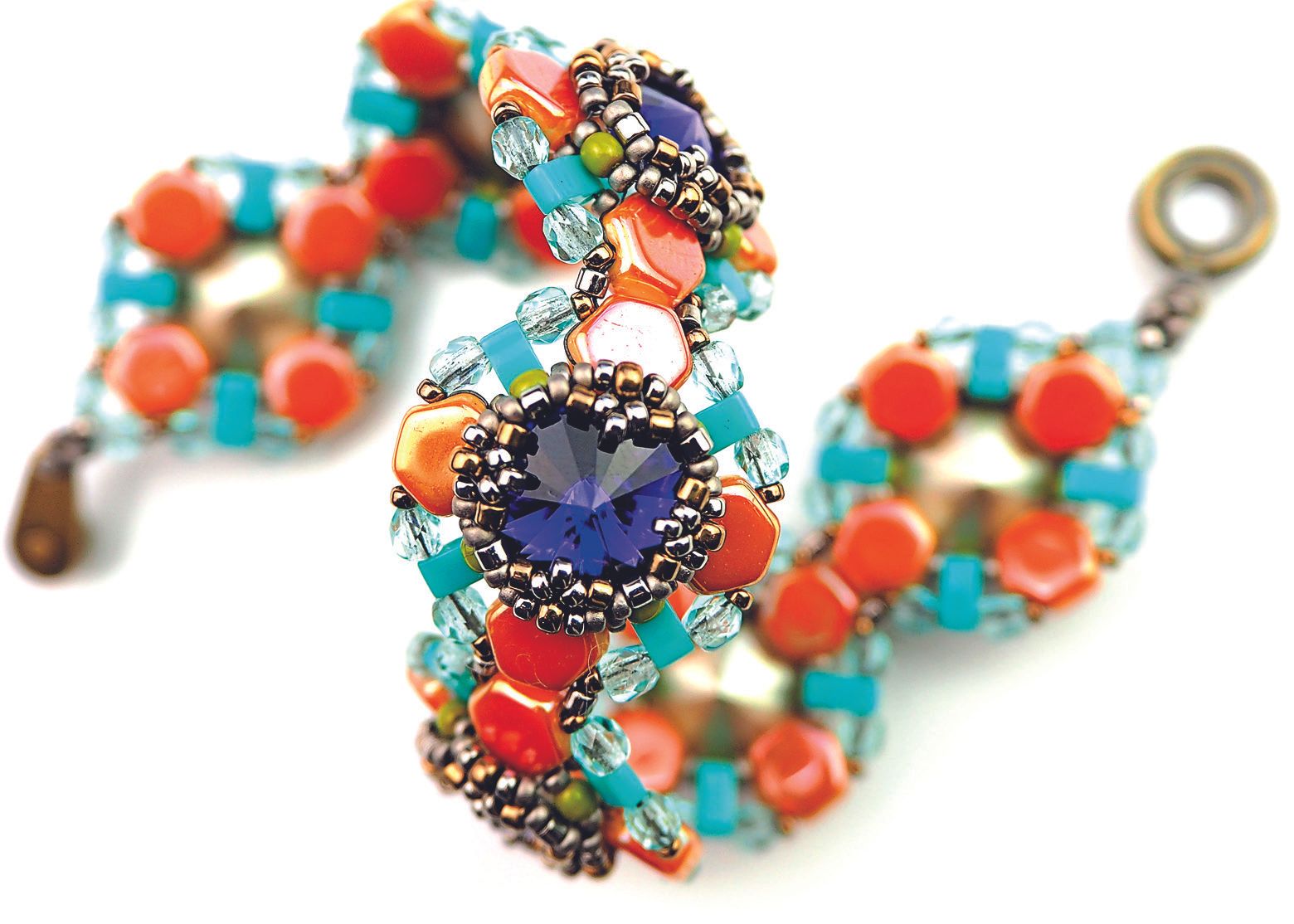
Do you work by yourself or have you collaborated with anyone else? Do you regularly work with others? I love to collaborate! I work closely with Beadsmith. I test new bead shapes and design jewellery to help them market their beads. It can be a very challenging but rewarding process. Sometimes I get a task which at first sight is not a good fit at all, but then it pushes me to try harder to make it work. Usually, I use a lot of different beads in my jewellery, however, recently I was asked to design several simple bracelets, earrings, and necklaces only with Superduos, size 6/0 and size 11/0 seed beads. At the beginning I thought that everything that’s possible to do was already explored with these simple beads, however, I soon discovered that it’s far from true, and now can’t stop. I really appreciate the relationship I have with Amy Blevins of Bead and Glass Boutique. Due to low income, I was about to stop beading, when she chose my Passiflora pendant as a theme for one of her bead-alongs.
Her group is great, and the response I got persuaded me to change my mind. In the meanwhile, she started to offer kits for my tutorials. She has an amazing approach to her customers, I couldn’t recommend her more! Another big plus in having a bead shop besides having all those beads was to get to know a lot of creative people. One of my best friends from that time is Lenka Gondova, who started to produce her own line of art quality, handmade cabochons under the brand L2Studio.sk. I was the first beader to work with them – which is a huge honour and pleasure. You can completely feel that they were designed by a beader for beaders when you hold them. They have just the right size and shape to work with, easy to bezel and fun to combine. The designs are interesting, yet not too bold, so they leave plenty of place for the imagination.
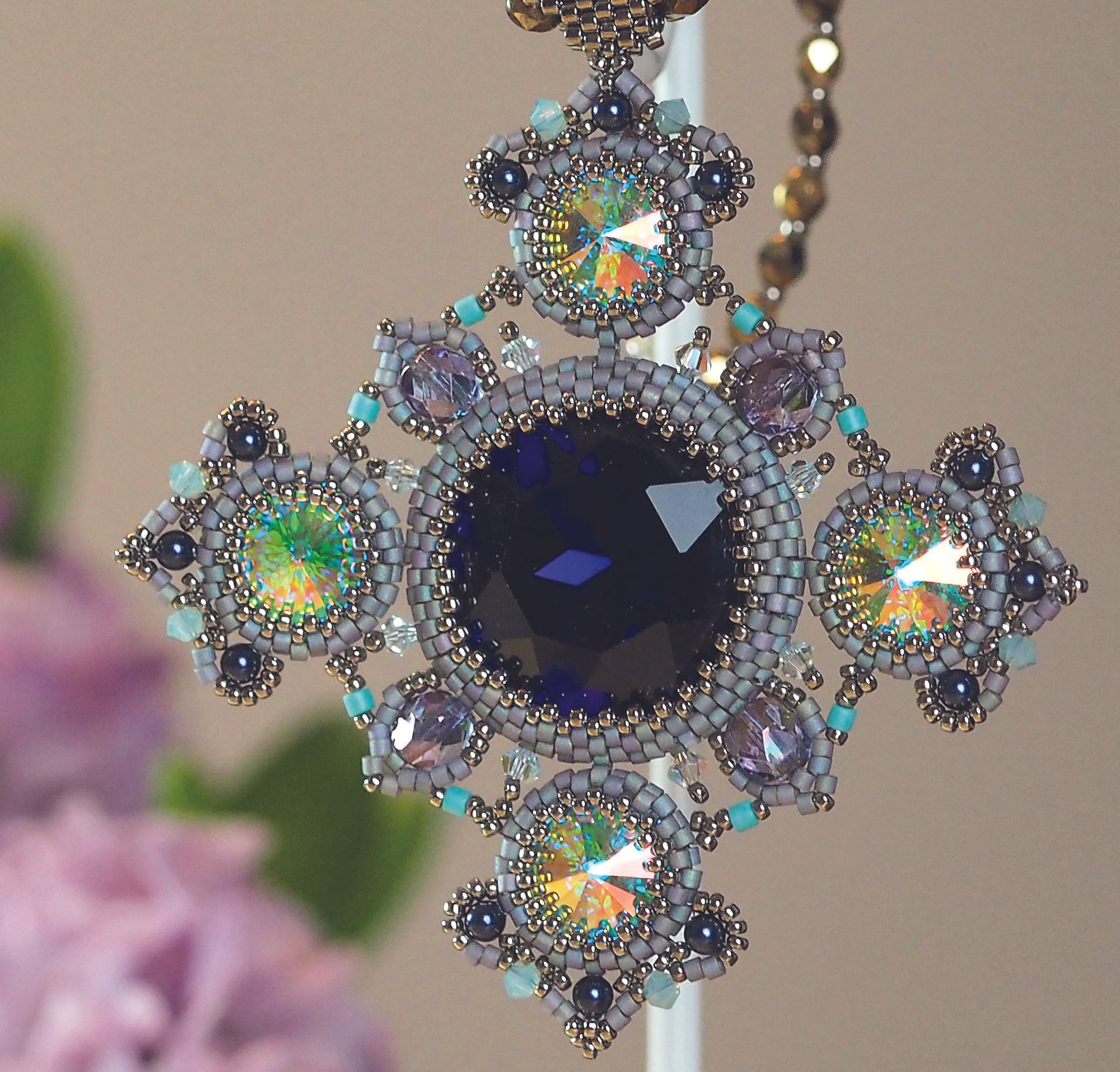
What are your goals? I would like to develop my website from a simple blog and online shop into a platform where beaders can learn about every aspect of beading and publishing their designs. On the other hand, I would like to offer space for other designers to introduce their work to the readers. Last year I regularly published a series of articles called ‘Face to Face’, where designers could talk about their inspiration, motivation and all their behind- the-scenes secrets! Marsha Wiest-Hines, Patrick Duggan, Kathy King and Cynthia Newcomer Daniel answered my questions between many others. I would like to revive this series soon, and also start to introduce local bead and jewellery related businesses: bead shop owners who work hard to bring us all the treasures, galleries which feature beaded jewellery and places where we can learn about jewellery making.
Another one of my goals is to bring beadwork more into public awareness.
I am also a feminist and as a tour guide in Amsterdam, I am also aware of the problems around the famous ‘Red Light District’ and the stigma people working there have to fight against. There’s a statue on the Old Church Square (Yes, there is a church and even a childcare centre between the red light windows.): Belle, the sex worker, standing proud and with her chin up. I think she deserves some bling and something nice to wear.
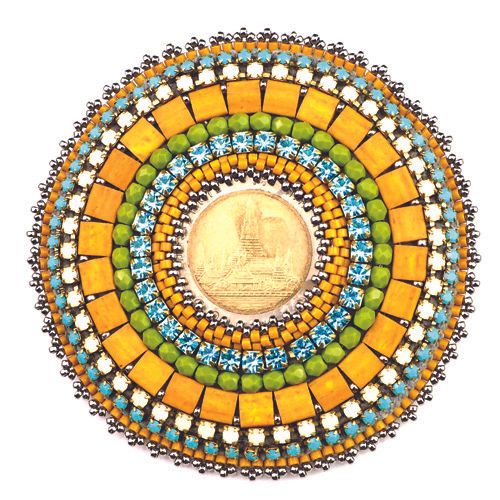
What have been your biggest accomplishments? My biggest challenge is to over- come my doubts and fears that I am not capable of something. Being a village girl and growing up with all the animals around me was awesome, however, the village-mentality also meant the feeling of being too small and not good enough. I have all the ideas and motivation, however, I often have a block when I start to work as I am afraid that I will make myself ridiculous. I decided to print and stick some of the reviews I get on my tutorials and on the Amsterdam tours on the wall next to my to-do list and future plans to help me ignore myself.
Any words of inspiration for other jewellery makers? Dear beaders, please don’t be afraid to walk on a path where you never wandered before. Try something new regularly: a new colour combination, a bead shape you haven’t worked with before or buy a tutorial from an artist you don’t know yet. It will be worth to try, I promise.
BEADLINK: www.thestorytellingjeweller.com

